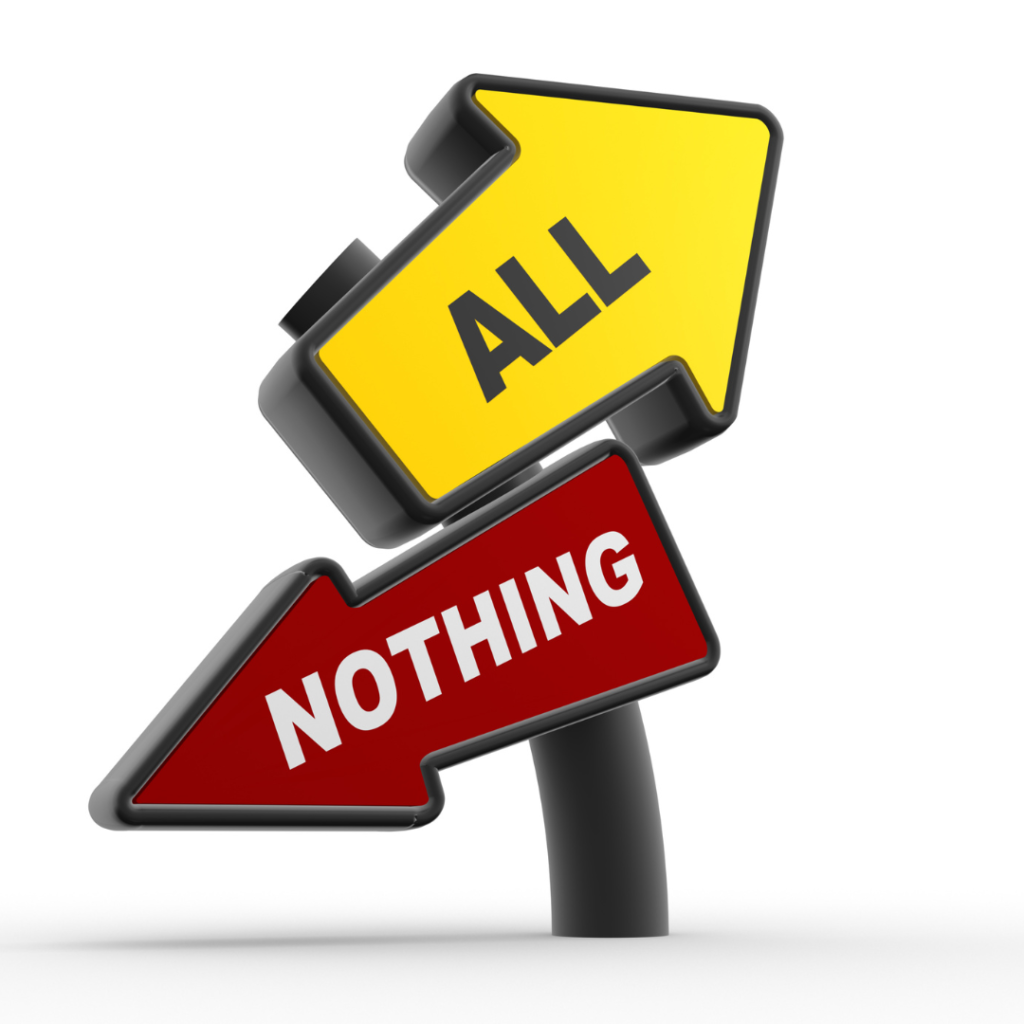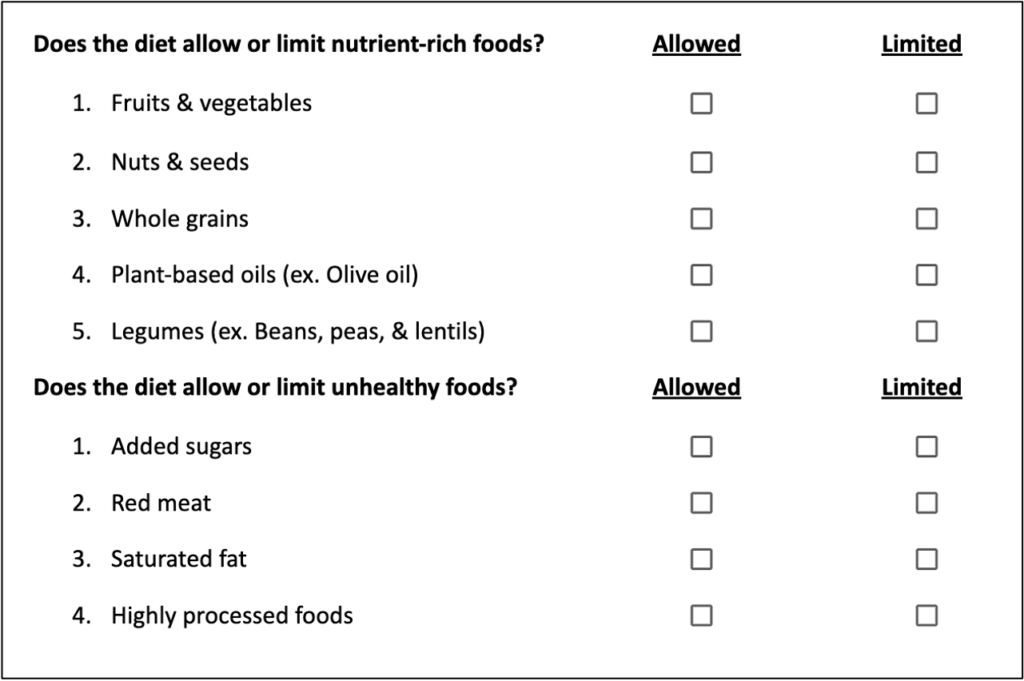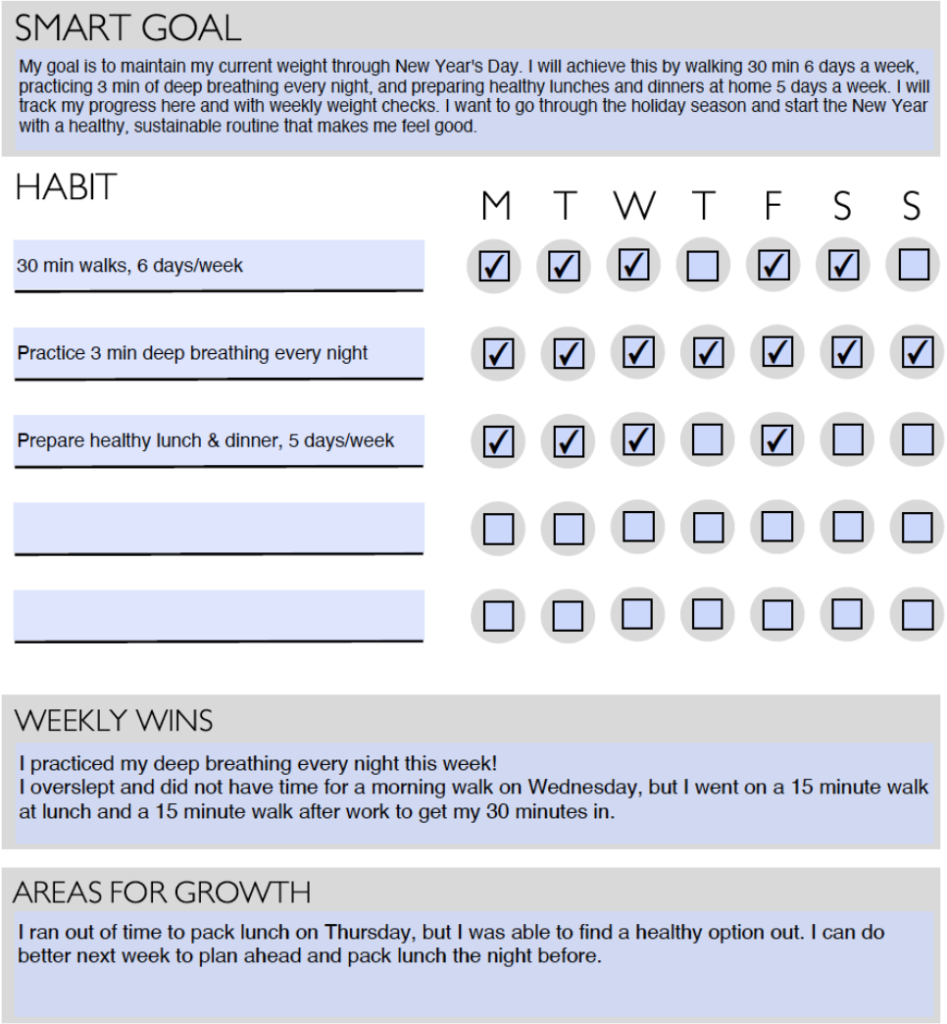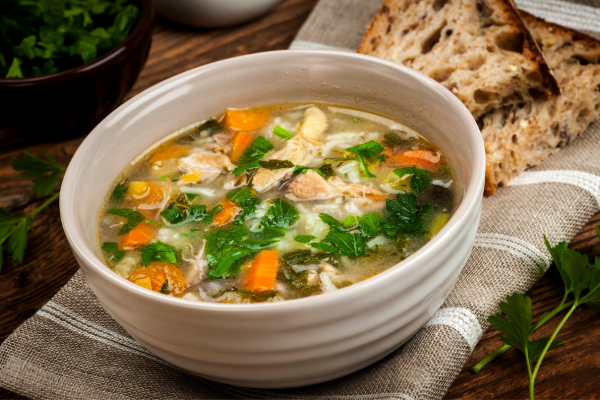
As we enter the time of year when people start thinking about behavior change, I think it’s important to go into these changes realistically. Don’t get me wrong, goals are GREAT! Setting goals is necessary for change and focus. Sticking with and achieving goals is rewarding but it is good to make sure that your goals are realistic.
Make sure your goals are realistic and don’t have an all-or-nothing approach. With nutrition and physical activity, doing something is always better than doing nothing. If you are not currently physically active, setting a goal of being active 7 days of week might be too much. Going from 0 to 100 can easily become overwhelming. What happens when inevitably you miss a day (because life happens)? You could feel defeated and think “…well I missed one day, might as well start over next week…” which could hinder the behavior change process. Perfectionist thinking is not the way to behavior change.
Manage Expectations
Maybe 10,000 steps a day isn’t realistic for you, but 5,000 is. THAT’S GREAT!! Studies have shown that every 1,000 steps you take decrease premature death by 15%. (Significant decreases in cardiovascular risk are seen until about 20,000 steps where benefits plateau).
Maybe your goal was to cut out sugar, but today you had a cookie. OK…so enjoy the cookie. But you don’t have to finish the container of cookies.
What helps?
For exercise, think about activity in small doses. Even 2-5 minutes at the time can add up. Consider a round or 2 of a HIIT workout. Possibly a minute of running in place, jumping jacks, squats, or push-ups.
For nutrition, think about small changes in diet instead of an entire overhaul of your normal diet.
Your new-year, new-you mindset does not have to be all-or-nothing. Small bouts of success could be the difference between letting your wellness goals fade or having them continue all year long. Remember, small step changes are good.
You might also enjoy:
Don’t miss another great blog: Subscribe Now











